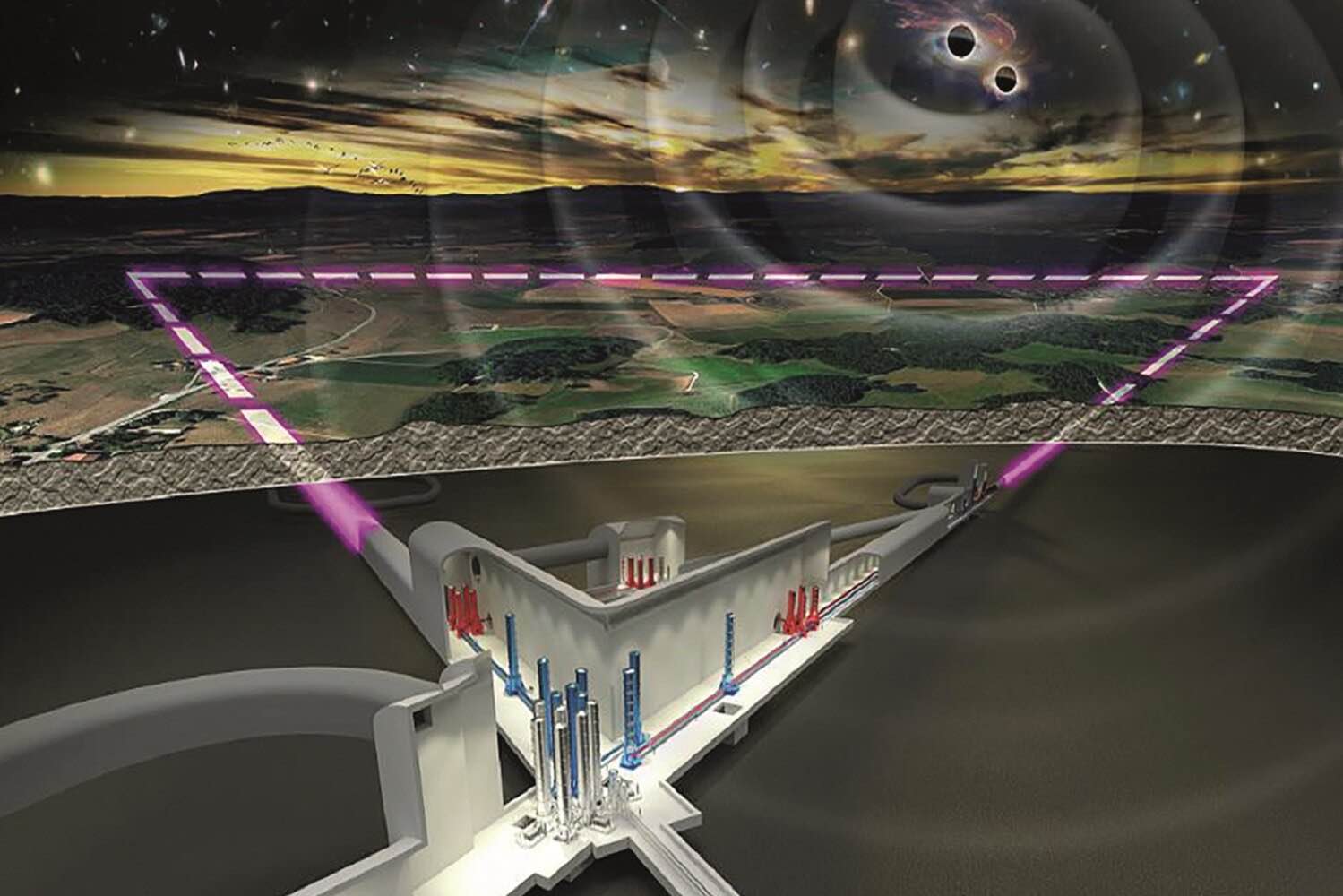A state-of-the-art new gravitational wave detector could mark the beginning of a new era in astrophysics with the development of the Einstein Telescope.
The telescope, currently still in the planning stages, will employ advanced laser technology to measure gravitational waves and help scientists peer even more deeply at phenomena associated with some of the universe’s greatest secrets. Construction could begin in Europe, and the project could revolutionize our understanding of cosmic events, including the collisions of neutron stars and black holes.
The Einstein Telescope will build on the 2015 discovery of gravitational waves and observations in 2017 produced by the collision of two neutron stars. This unprecedented achievement marked the first time such events were detected both optically and as a spacetime-rippling gravitational wave.
The remnants of burnt-out stars, neutron stars, are relatively small but extremely dense objects that weigh slightly more than the Sun. When these celestial objects collide, they are so powerful that atomic nuclei are ripped apart, resulting in the ejection of large amounts of mass that produce heavy atoms like gold.
Professor Achim Stahl, an astrophysicist from RWTH Aachen University, says that when compared to the mass of the neutron stars themselves, very little gold is created by comparison, comparable in mass to the size of Earth’s moon. Yet most of the gold in the universe was likely produced by such explosions.
In other words, the gold rings, necklaces, and other jewelry we wear probably have origins that would have allowed them to witness events in galactic history.
Gravitational Wave Detection
The recent dawn of gravitational wave detection has opened a new chapter in astrophysics. Created when extremely massive objects orbit each other and eventually collide, the resulting “ripples” in spacetime provide us with a once unimaginable way to perceive distant cosmic events.
The initial gravitational wave detected in 2015 was very short, lasting slightly more than 0.2 seconds. However, subsequent detections like the one logged in 2017 lasted 100 seconds, revealing the collision of two neutron stars and the first simultaneous observation of both gravitational waves and electromagnetic signals.
Such advancements are significant since most of the history of astronomy has relied on observations that were limited only to the visible spectrum. However, predictions first made by Einstein more than a century ago revealed the theoretical existence of gravity waves, which only became detectable and able to be measured with the help of laser interferometry, a process that allows movements smaller than the diameter of an atom to be registered.
The Einstein Telescope
The new Einstein Telescope, representing the third generation of gravitational wave detectors, will be ten times as sensitive as any current detector.
“We want to examine an area that is a thousand times larger than what is possible today for gravitational waves,” Professor Stahl said in a statement. “This also applies to heavier objects that emit gravitational waves at lower frequencies.”
Comprised of a trio of nested detectors, each possessing 10-kilometer arms and built 250 meters belowground to provide shielding from electromagnetic interference, the observatory will represent the pinnacle of multi-messenger astronomy, a nascent approach in astronomy that collects and interprets information from a variety of different signals produced by different astrophysical processes, which include gravitational waves and electromagnetic radiation, as well as particles like neutrinos, and cosmic rays.
Measurements obtained by the Einstein Telescope will rely on international cooperation due to their complexity and will form a network in conjunction with the U.S. Cosmic Explorer, with the project included in the European Strategy Forum on Research Infrastructures (ESFRI) Roadmap in 2021. Currently, construction of the new telescope could begin as early as 2026, and observations may begin as soon as 2035.
New laser technologies are also being developed for the new telescope, which is being produced by a team that includes engineers from RWTH Aachen University and the Fraunhofer Institute for Laser Technology ILT. Such technologies could be beneficial beyond the detection of gravity waves, potentially extending to areas that include quantum and medical technologies.
“With gravitational waves, we can look much further into the universe than with normal telescopes,” Professor Stahl said in a recent statement. Once it enters operation sometime in the next decade, the Einstein Telescope will mark a new horizon in observations of distant galaxies and their formation, as well as glimpses at some of the first stars in the universe as it peers deeper into universal history than optical telescopes can allow.
“In astrophysics, looking further into the universe means – above all – looking back in time,” Stahl said. “With the Einstein Telescope, we will receive signals from the time when the galaxies and the first stars were formed. This goes back further than is possible with optical means.
“And we will hear cosmic explosions live with the gravitational waves before we see them,” Stahl added.
Along with expanding our perspective of the universe and its formation, the telescope will also help scientists perform systematic measurements of cosmic events and yield other exciting developments for the future of astrophysics.
Micah Hanks is the Editor-in-Chief and Co-Founder of The Debrief. He can be reached by email at micah@thedebrief.org. Follow his work at micahhanks.com and on X: @MicahHanks.

